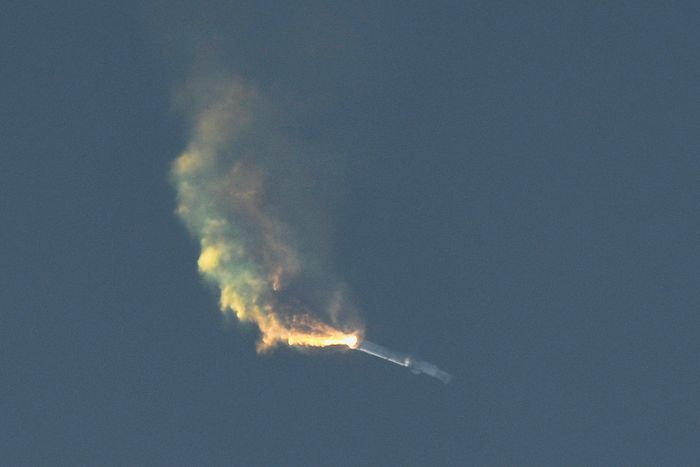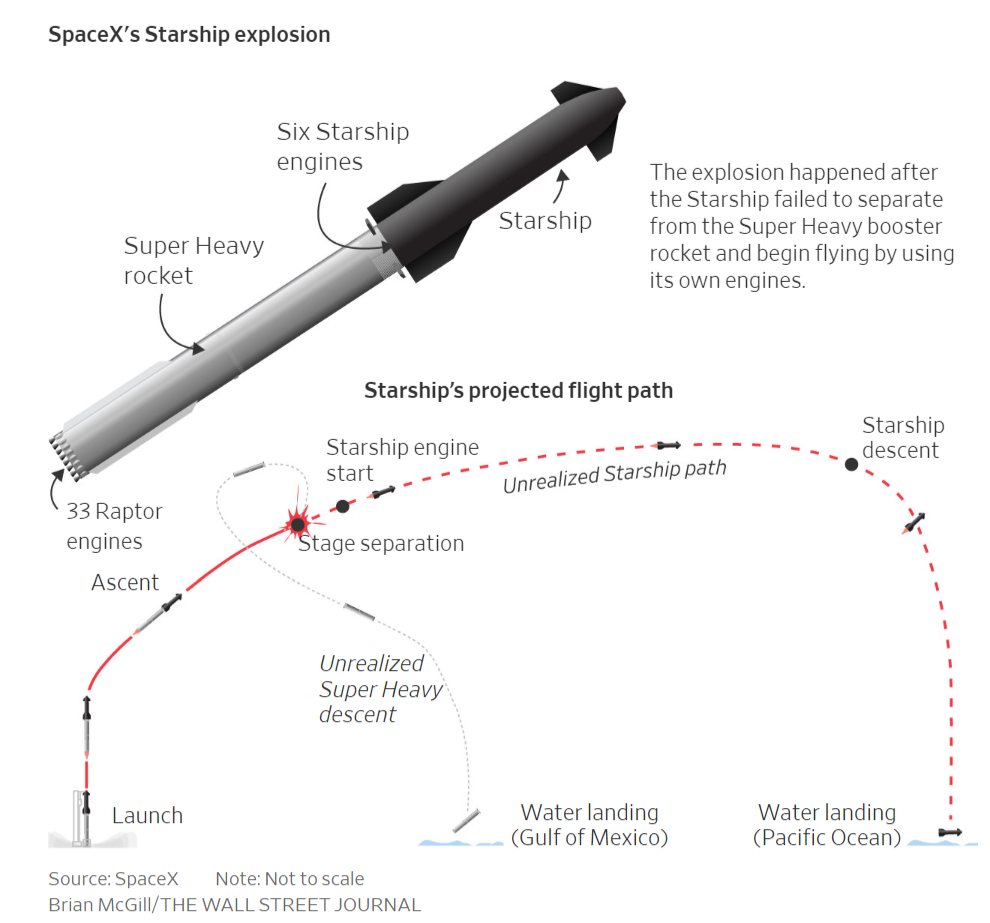SpaceX on Friday is taking stock after the company's Starship rocket exploded a few minutes after lifting off the day before in southern Texas.
So are several local officials, regulatory and environmental agencies.
Regulators said they were analyzing what the launch meant for nearby natural areas and public safety. Environmental groups and some local residents have raised concerns about the impact of SpaceX's activities on and around its base.
For SpaceX, the uncrewed test flight that flew about 24 miles into the sky crossed multiple key thresholds. The rocket made it through the period of flight where it experienced the most amount of stress. Simply blasting off the enormous vehicle was also a milestone, company officials said.
"If we lift off and clear the pad, we're calling that a win," SpaceX engineer Kate Tice said on the company's live stream Thursday. Throngs of onlookers watched the launch from beaches and parks a few miles from the company's launchpad.
The test, years in the making, was among a number of steps needed before SpaceX can try to take people to the moon and eventually Mars as the company one day hopes to do. SpaceX wants to demonstrate that Starship's Super Heavy booster can propel its large spacecraft into orbit, and safely land both vehicles for re-use.
Last year, the Federal Aviation Administration, which oversaw an environmental assessment of SpaceX's Starship plans, listed dozens of steps the company needed to take to mitigate the effects of Starship launches.
A SpaceX spokesman didn't respond to requests for comment.
A large plume shot up around the launchpad as the vehicle -- standing close to 400 feet tall, and loaded with 10 million pounds of fuel -- began to lift off Thursday morning. SpaceX has called Starship the most powerful rocket ever built.
A video SpaceX later posted of the launch appeared to show material being shot into the Gulf of Mexico during the initial few moments of the launch. Splashes were visible in the water. The rocket exploded about four minutes after lift off.
For the launch, a keep-out zone was established to ensure people weren't in close proximity to the operation. SpaceX's launchpad and the Starship production facilities are located on and near a beach along the Gulf of Mexico, about 20 miles east of Brownsville, Texas, a town of about 188,000.
Part of the highway leading to the site and beach that hosts the company's launchpad is expected to remain closed until 3 p.m. ET Friday for safety reasons during cleanup efforts, according to the top official of Cameron County.
Both were supposed to reopen at 3 p.m. ET on Thursday if Starship's flight had proceeded as planned. Cameron County posted information on its website about how residents could contact SpaceX if they believed they found debris.
Conditions on the ground at and near the launch site couldn't immediately be determined.
SpaceX provided the U.S. Coast Guard with data about what happened, and the agency determined there wasn't any debris in waterways that could pose hazards, a Coast Guard spokeswoman said Thursday evening.
The FAA, which is overseeing an investigation into what happened during the test flight, has to determine that what led to the mishap doesn't pose a public safety threat before SpaceX can attempt another flight, according to an agency spokesman.
No injuries or damage to public property had been reported as of Thursday afternoon, according to the FAA.
Staff from the U.S. Fish and Wildlife Service, which oversees land near the company's Starship facilities, are assessing impacts from the launch, a spokeswoman said Friday.
SpaceX, which wants to operate an intensive flight-testing campaign for Starship, doesn't expect to try to fly again for at least a few months, according to Elon Musk's comments on Twitter after the explosion.
A top concern for Mr. Musk, SpaceX's founder and chief executive, was how the launchpad would stand up to Starship's dozens of powerful engines firing all at once to get the massive vehicle off the ground. Some former space employees and industry officials pointed to a photograph of the pad area that circulated online that appeared to show damage to it.
Former SpaceX employees have said the company encourages risk taking, so long as safety isn't compromised, and SpaceX engineers are skilled at using data gleaned from explosions or problems to improve.
SpaceX's approach to testing Starship has differed from the company's approach years ago when it was developing its smaller Falcon 9 rocket, a partially reusable vehicle that has emerged as the company's workhorse. Falcon 9 is being used in missions for commercial satellite operators, NASA and other customers.
When it was developing Falcon 9, SpaceX conducted what are called full-duration tests on the ground. For those, the vehicle's booster would be loaded up with propellant and the staff would fire the engines until the fuel was spent, just like during a flight, according to people familiar with the tests.
Space Exploration Technologies Corp., as SpaceX is called formally, didn't attempt such a full-duration test of the Super Heavy booster and its engines before Thursday's launch. The company has conducted other ground tests of the engines for the booster. In February, for example, the company completed a shorter, so-called static-fire test of them.
Mr. Musk said 31 out of the 33 engines on the booster worked then. SpaceX said in a statement after Thursday's flight that some engines went out during the mission.


